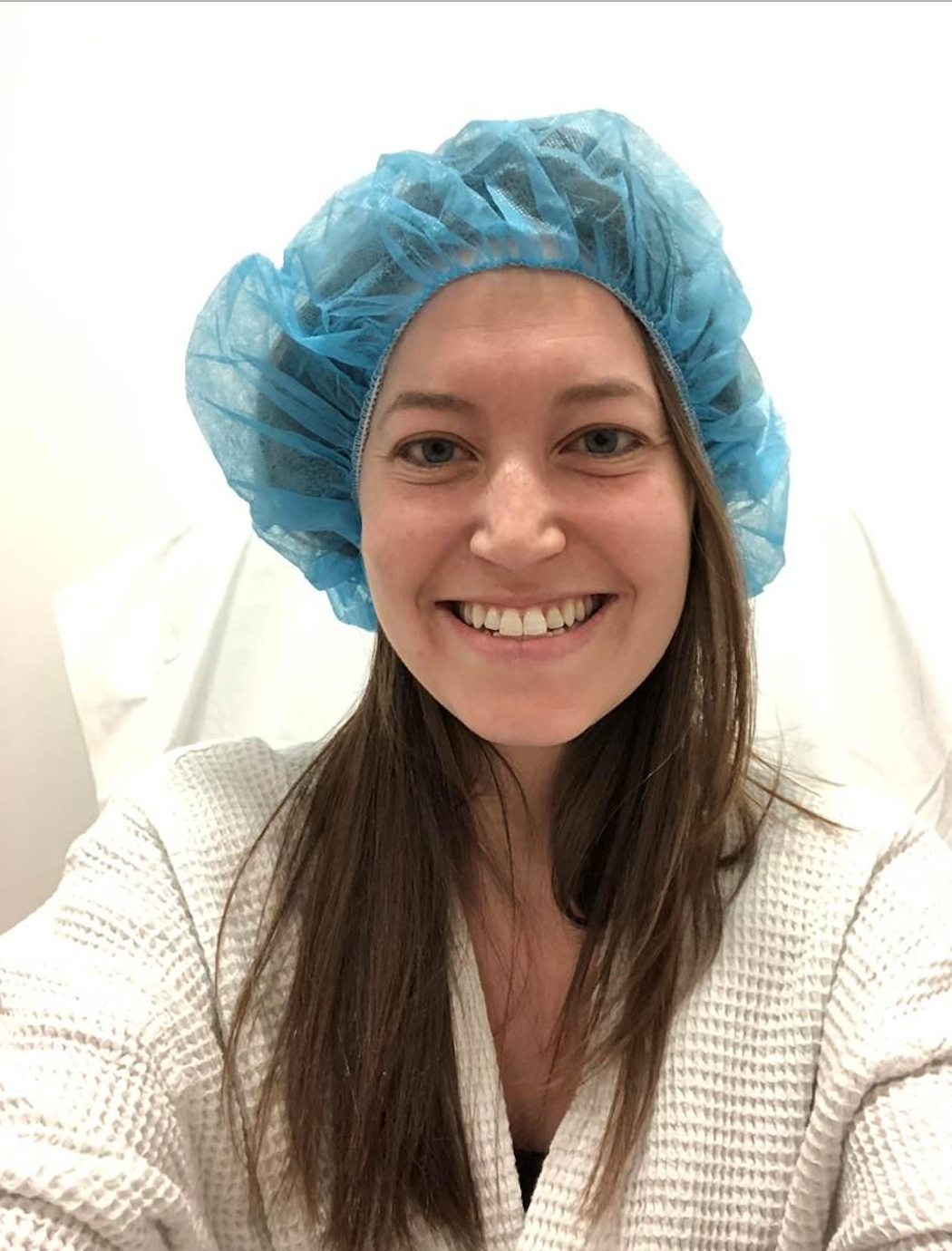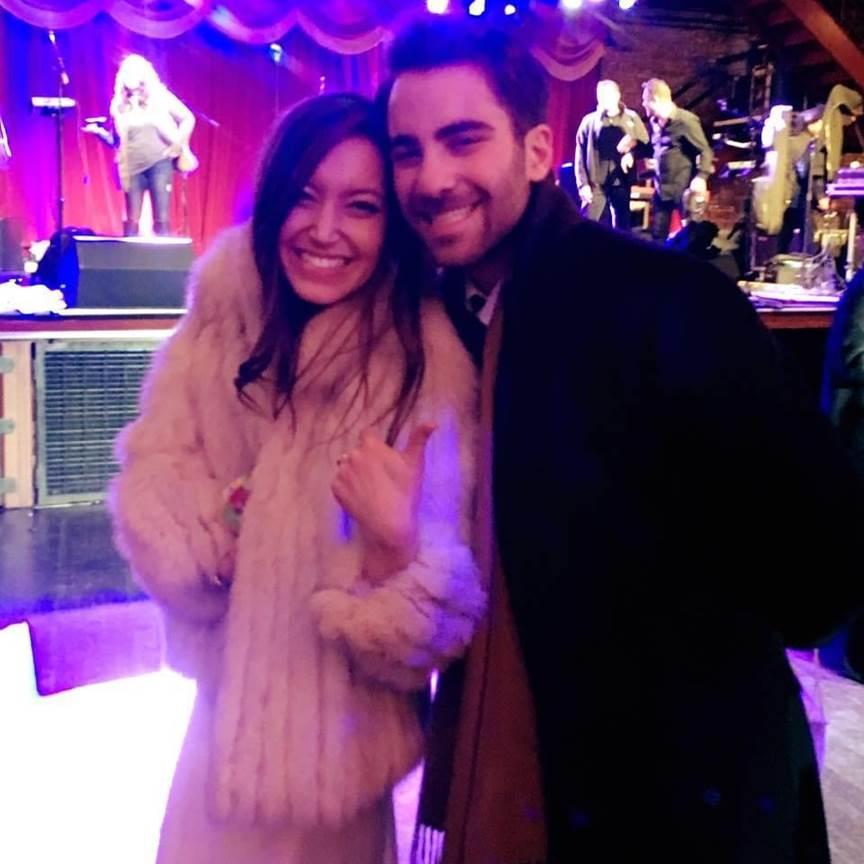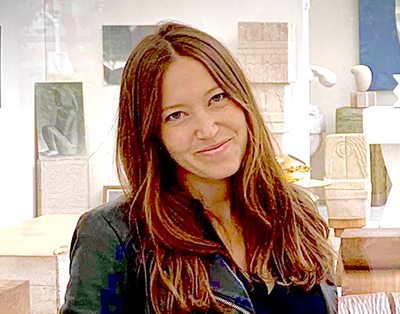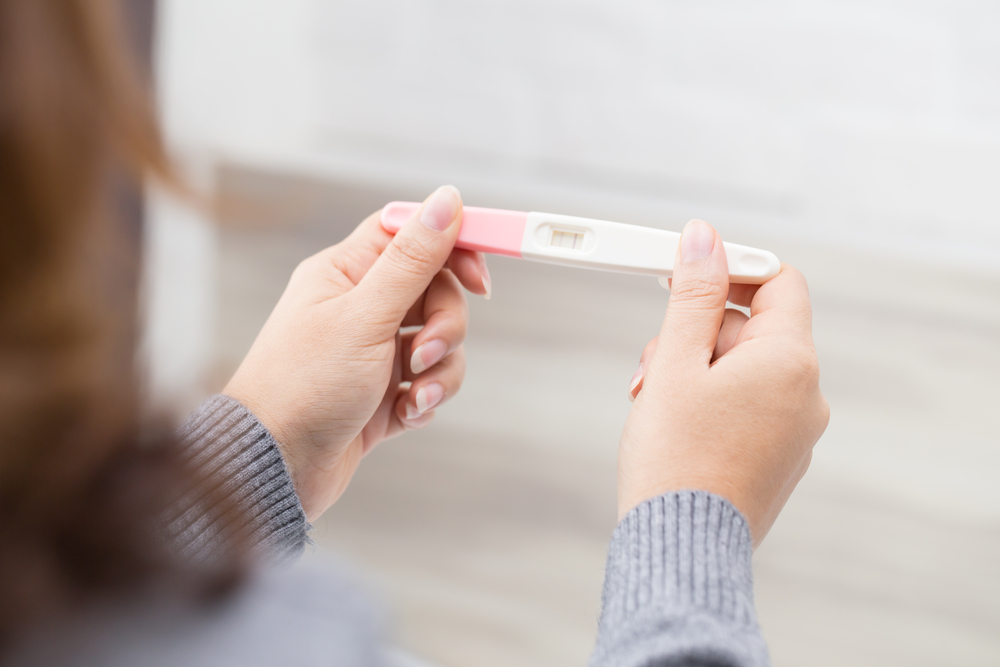When I learned about Hadassah’s reConceiving Infertility initiative to decrease stigma around infertility by sharing people’s personal journeys and helping people access treatment, I felt compelled to share my story with Thrive Global readers.
The very first thing Michael and I bonded over was our love for, and commitment to, our families, and our especially deep connection to our grandparents. We both had grandfathers named Jules who played clarinet in the army band, and as our relationship heated-up we developed an unspoken agreement that one day we’d have a child named after them.
Over the course of several years, we moved in together, got engaged and married, travelled the world, and fell even more in love. Michael founded a baby goods company called Lalo, in anticipation of the family we’d begun trying to build. But the rest of our story didn’t quite work out as planned.
Beginning in September 2017, we “tried” for three months, the “average” amount of time it takes for a couple under 30 to conceive. No luck. I visited the gynecologist who confirmed I was ovulating; she said to just keep trying.
After six months, she referred us to a reproductive endocrinologist (RE). He diagnosed us with “unexplained infertility,” a frustrating but hopeful diagnosis. We were the ideal candidates for IVF, “if it would even come to that,” but we still didn’t believe we were headed there, as two young people with no underlying health issues.
We spent the following year waking up at the crack of dawn nearly every morning for testing and procedures. In that time, we underwent six medicated double IUIs, each with a slightly different protocol, each failed.
And so, our doctor told us it was time to start IVF. In early 2019, we underwent our first egg retrieval followed by ICSI and PGS testing. We ended up with 10 viable embryos, an astonishingly high number in the world of infertility, but our journey didn’t end there.
I was going for acupuncture, participating in group therapy and individual therapy, engaging in the world of online support networks, practicing breath-work for grief, and doing everything in my power to remain healthy and positive, but it was hard.

We were open with our community about our struggles. I found it cathartic to talk through the trauma and wanted the sympathy of the people I love. Our families were amazing. For example, we were not eligible for any of the infertility grants or assistance programs we applied for, but when we expressed concern to our parents that having a child, an activity that’s practically free for most people, would cost us nearly the price of a down payment on a small home, they chipped-in without hesitation. And as our journey continued, on both sides, they rode the rollercoaster with us, celebrating when there was a glimmer of hope and and mourning when that’s what we needed.
With friends it was much more complicated. For the most part, friends simply didn’t check in, which made me feel like a pariah, or a contagious creature. And when they did check in, they’d often share unsolicited wisdom like, “be patient” or “relax and it will happen.” Sometimes I wanted to yell, “this isn’t about patience, it’s about the loss of my greatest dream,” or “until you have a crystal ball, don’t f****** tell me it will happen.” But even worse, were the more acutely painful conversations about friends considering abortions and celebrating their first Mother’s Day. And so, for a large part of the journey, I protected myself by distancing from my preexisting social life and tapping into the underground world of fertility allies that I am still deeply enmeshed in. These women taught me much of what I now know about empathy: it’s okay to just listen, there is no such thing as offering too much support and love, it’s a FERTILITY journey not an INFERTILITY journey, and it’s possible to hold together the opposing emotions of incredible joy for others and profound personal sadness…
Michael had to be away for our first embryo transfer and so my mom joined me and video chatted him in. We were sure that we were as well set up for success as possible. Two weeks later we received a call from our doctor that the transfer had failed. We’d need to try again.
Michael and I rationalized that the first failure was a fluke, and so we persevered. After our second transfer we went out for donuts and then home to relax. I tried to feel whole knowing I had our embryo inside of me, but the truth is I was scared. And rightfully so, because two weeks later, standing in my office hallway, heart beating faster than ever in my life, I answered a call from my RE only to find out that our second embryo transfer failed too.
Given our demographics, we were in the 20% of unlucky couples to have two failed transfers. I was sure something was wrong and so we sought a second opinion at a different clinic. The new RE reviewed our records, did an internal exam, and ultimately told us that we were working with an excellent doctor who had a perfect plan for us and we should continue on our course.
Without getting into the nuances of our protocol for each transfer, we tried for a third time. I focused heavily on maintaining an anti-inflammatory diet as prescribed by my naturopathic doctor. One week after our third transfer my anxiety was through the roof and I resolved to take an at-home pregnancy test to put myself out of my misery and prove to Michael that this time was no different than the others. Alas, it was different. I texted a picture of the test to my closest friend from the fertility world, and she confirmed: Two lines. I was finally pregnant. I called Michael to share the news, we were both so elated we can’t even remember what the rest of that day was like.
We heard the heartbeat, shared the excitement with our families on Father’s Day, were blessed with an easy remainder of the pregnancy, and on February 4th, 2020, after 30 months, we welcomed our miracle baby, Jemma.
In the time since our baby was born, Hadassah, which advocates for women’s health issues, launched a new initiative, reConceiving Infertility, to raise awareness, destigmatize and confront prejudices and misconceptions on this once-taboo topic, drive policy change at the state and national level, and empower patients to advocate for their own health.
reConceiving Infertility features a series of videos narrated by Amy Klein, author of The Trying Game: Get Through Fertility Treatment and Get Pregnant Without Losing Your Mind (April 2020, Penguin/Random House). Klein’s powerful story involved nine rounds of fertility treatment, 10 doctors and four miscarriages – in just three years. The first video, “How to Help People Struggling With Infertility During COVID-19,” is available at www.hadassah.org/infertility. “What Not To Say About Baby-Making” and “Infertility: Costs, Coverage, and Creativity” are next in the series.

The inability to have a child affects 6.7 million women in the U.S, according to a Centers for Disease Control study, or about 11 percent of the reproductive age population. Given limited access to insurance coverage and the high cost of treatments, including assisted reproductive technology (ART), many families incur substantial debt or are prevented from seeking treatment due to the financial burden.
Not a day goes by that I don’t think about how lucky we are to be living in a time in which excellent science and committed doctors made it possible for me and Michael to fulfill our dream of becoming parents and give our own parents the joy of becoming grandparents. Yet I also recognize that the stigmas surrounding infertility and the cost of treatment can be downright debilitating for many families. In fact, I’m still triggered regularly when I think about the nonlinear and unromantic nature of our journey compared to others’. And while I know that no two stories are the same, I hope that reading mine and Michael’s will bring at least one person out there hope that no matter what it takes for your family to feel whole, your time will come.



